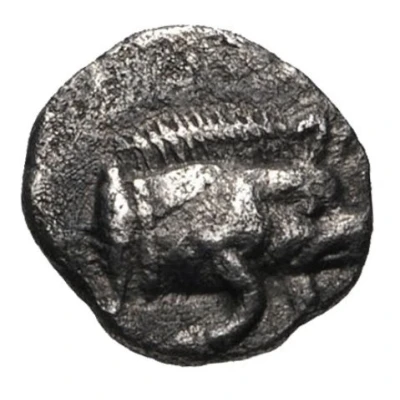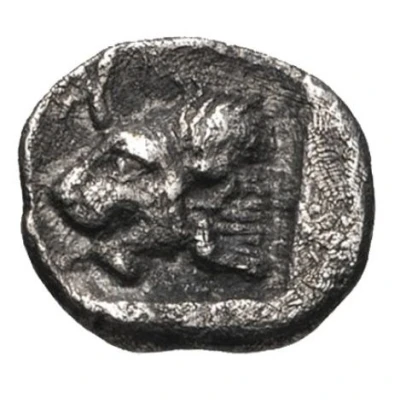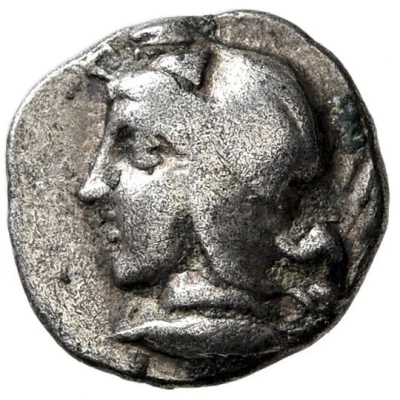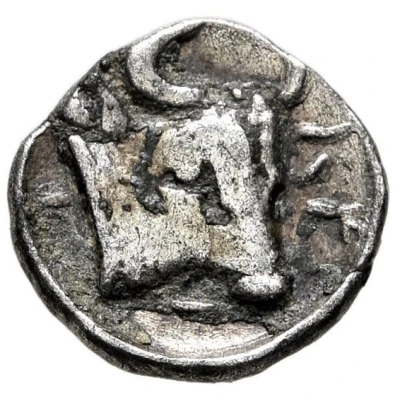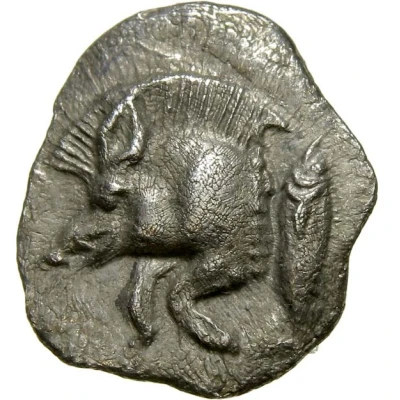
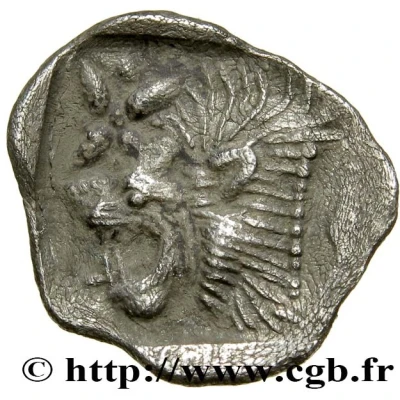

© CGB
Hemiobol 480 BC - 450 BC
| Silver | 0.37 g | 6 mm |
| Issuer | Kyzikos (Mysia) |
|---|---|
| Period | City administration (600 BC - 1 AD) |
| Type | Standard circulation coin |
| Years | 480 BC - 450 BC |
| Value | Hemiobol (1⁄12) |
| Currency | Drachm (500-27BC) |
| Composition | Silver |
| Weight | 0.37 g |
| Diameter | 6 mm |
| Thickness | 0.8 mm |
| Shape | Round (irregular) |
| Technique | Hammered, Incuse |
| Demonetized | Yes |
| Updated | 2024-10-10 |
| Numista | N#87300 |
|---|---|
| Rarity index | 65% |
Reverse
Head of roaring lion left, with open jaws and tongue protruding, a four-rayed star above, all in quadrilateral incuse
Interesting fact
The Hemiobol coin from Kyzikos (Mysia) was used as a form of currency in ancient Greece and its design featured the image of a mythical creature called the "Kyzikos Lion." This lion was a symbol of the city of Kyzikos and was believed to have special powers. The coin's design was meant to signify the city's wealth and power, and it was used for trade and commerce throughout the region.
Price
| Date | Mintage | VG | F | VF | XF | AU | UNC |
|---|---|---|---|---|---|---|---|
| ND (480 BC - 450 BC) | - | - | - | - | - | - |
Values in the table are based on evaluations by sales realized on Internet platforms. They serve as an indication only for Hemiobol (480 BC - 450 BC) coin.
